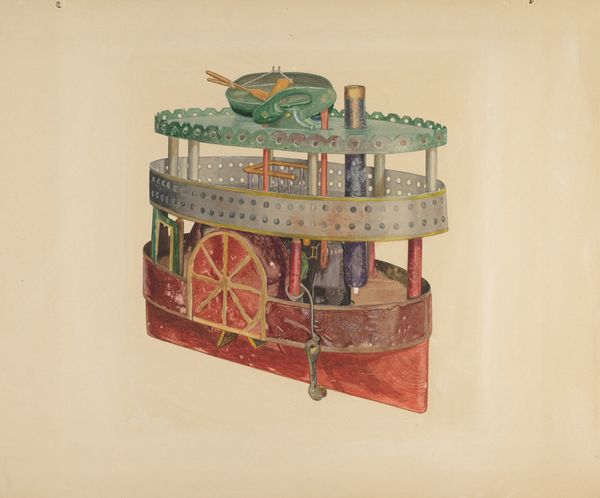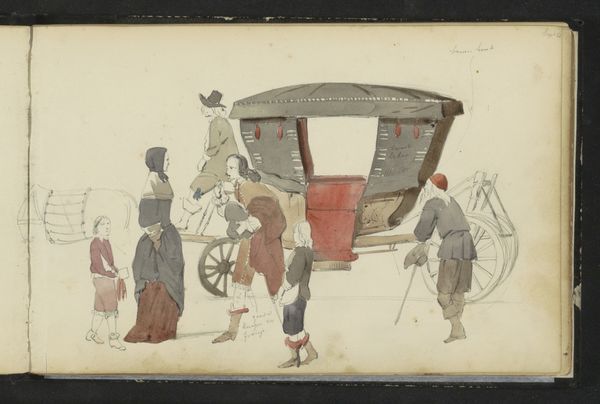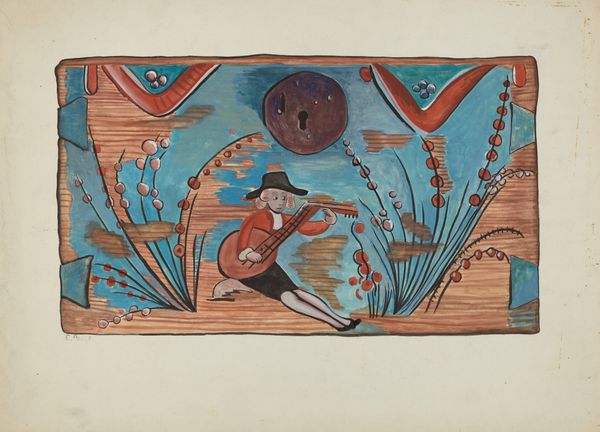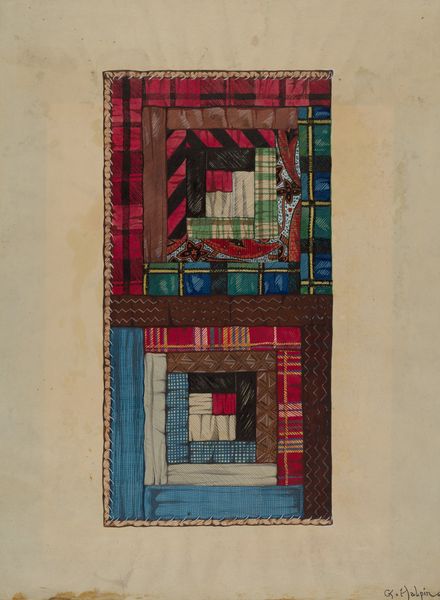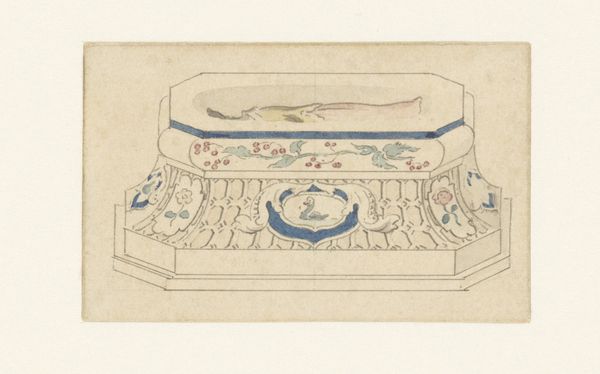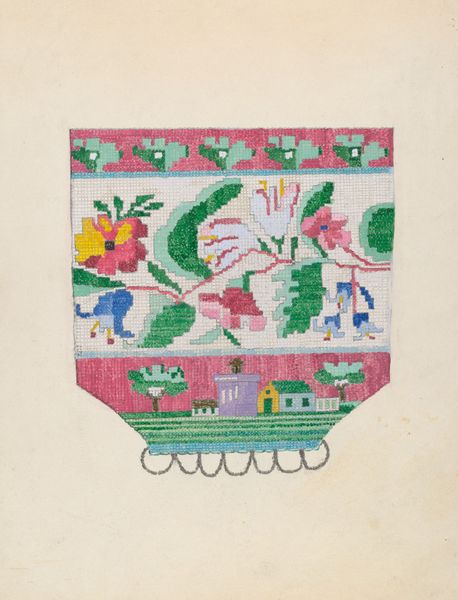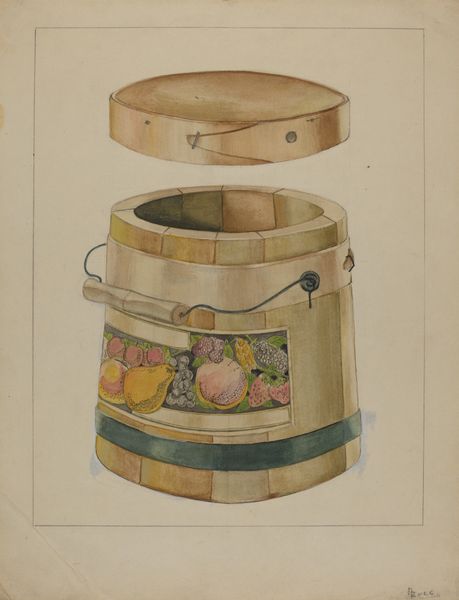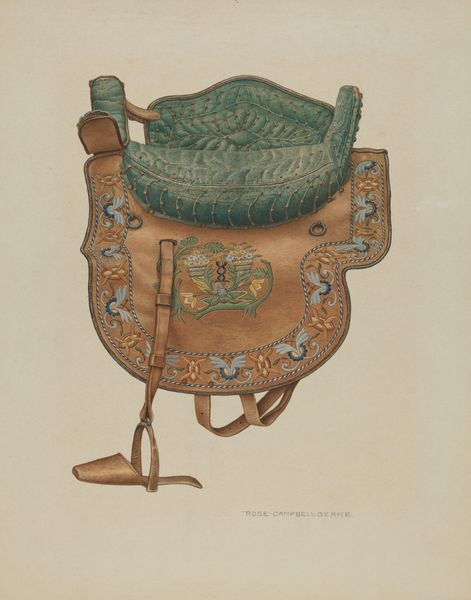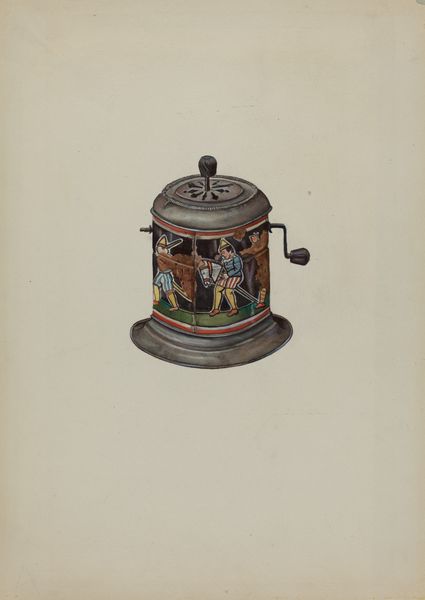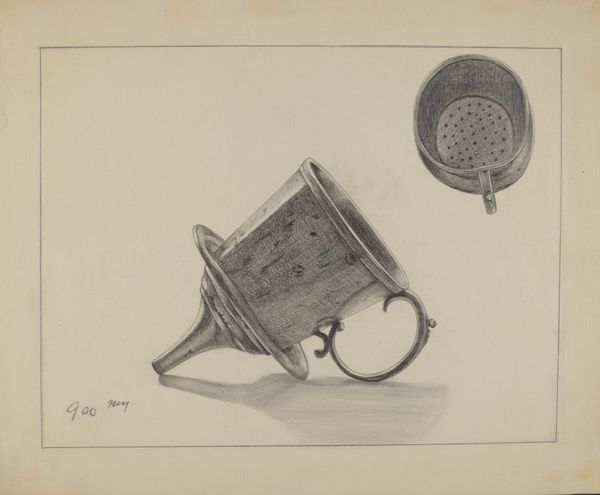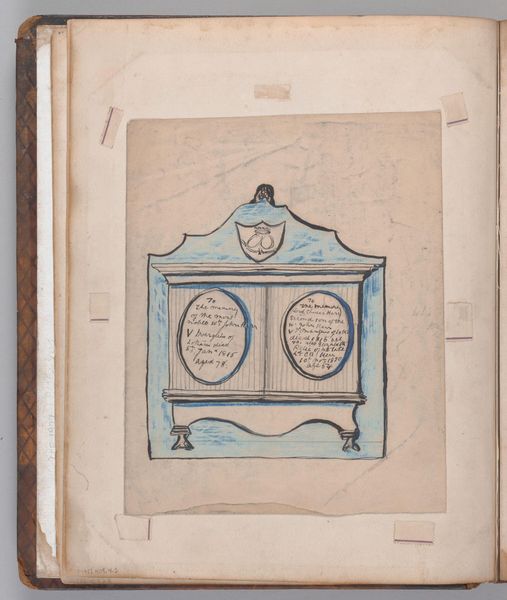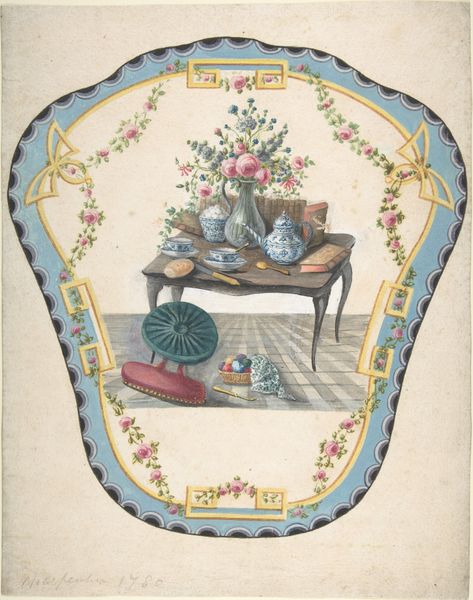
drawing, plein-air, watercolor
#
drawing
#
plein-air
#
landscape
#
watercolor
#
genre-painting
#
realism
Dimensions: overall: 22.7 x 29.9 cm (8 15/16 x 11 3/4 in.) Original IAD Object: 8 1/4" high; 9 1/2" long; 5 1/2" deep
Copyright: National Gallery of Art: CC0 1.0
Curator: Immediately I'm struck by the geometry of it—that tight rectangle holding the entire world of this tiny shop. And all those circles within, hanging like little moons. Editor: This is John Fisk's watercolor, “Basket Maker's Store,” created around 1936. Fisk, primarily known as a plein-air painter, really captures a moment in time. Look at how he’s presented a slice of Americana, elevated by this humble craft. Curator: Humble, yes, but consider the light. That back wall, turquoise, it almost glows. And the man inside, slightly awkward in his suit, becomes an icon in that wash of color. I can almost smell the dampness of the woven reeds. Editor: Indeed. This seemingly simple watercolor reflects broader socio-economic realities of the period. Basketry was an essential occupation for many indigenous communities, and depictions like this raise questions about labor, trade, and cultural appropriation in early 20th-century America. How does Fisk acknowledge, or perhaps obscure, those narratives? Curator: You make me consider whose hands wove these vessels. Are we romanticizing a trade born out of necessity, maybe even exploitation? Yet, isn't there beauty in the repetition, the practiced rhythm of hands crafting something useful? Editor: That tension is precisely where the artwork's power resides, in my opinion. Fisk isn't simply painting baskets. He's depicting a cultural exchange, however fraught with complexity and unequal power dynamics. We have to consider the visibility he gives to these trades, which may often be invisible. Curator: Visibility is generosity, but doesn't capture truth by itself. What a complicated thing to make something simple. It's like a haiku that way! A snapshot that hints at the wider story. Editor: Precisely. "Basket Maker's Store" urges us to consider the layers within these seemingly commonplace scenes and, by doing so, allows a nuanced understanding of our shared histories. We have to be very conscious about what’s at stake and for who in these economies.
Comments
No comments
Be the first to comment and join the conversation on the ultimate creative platform.
